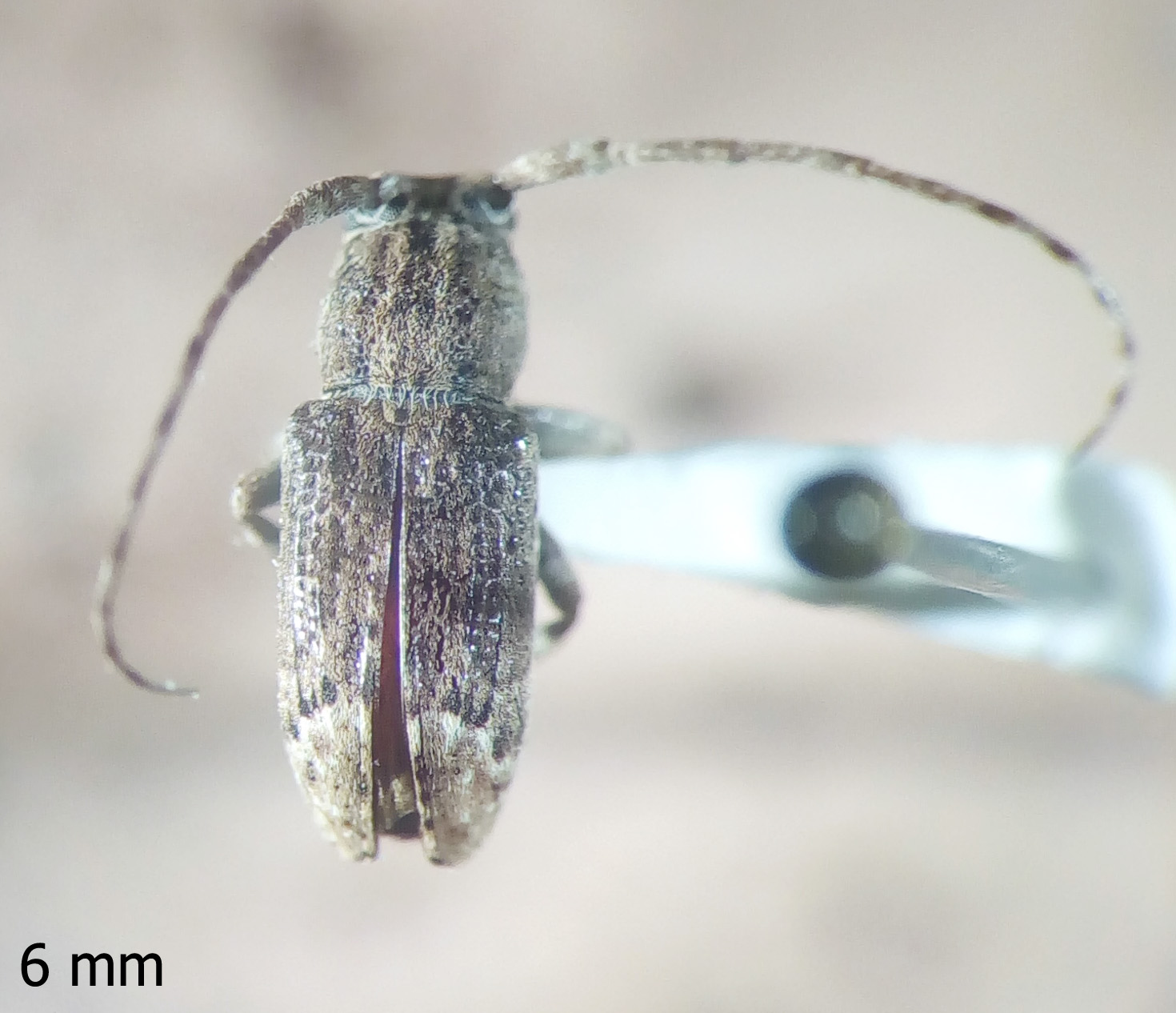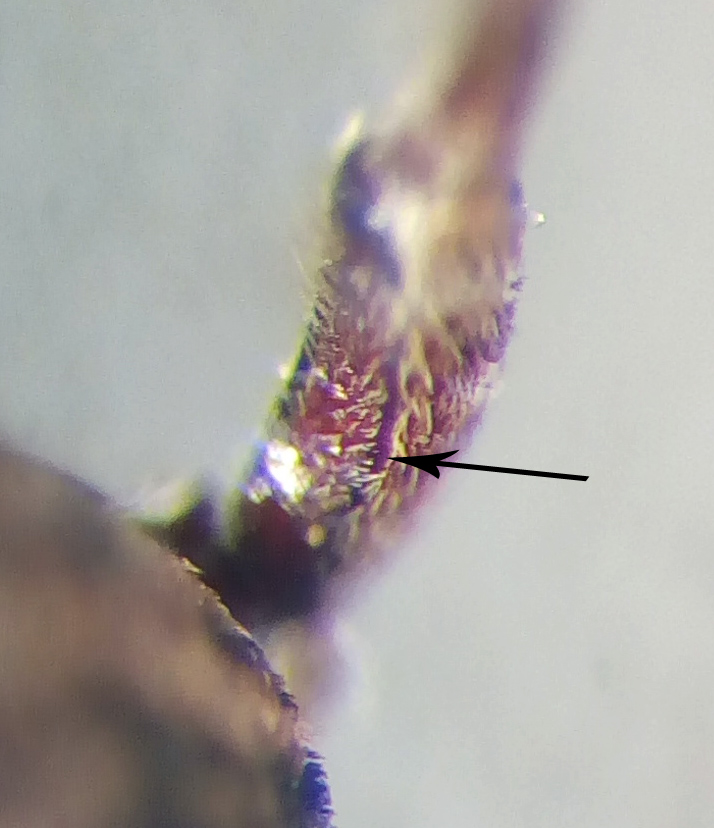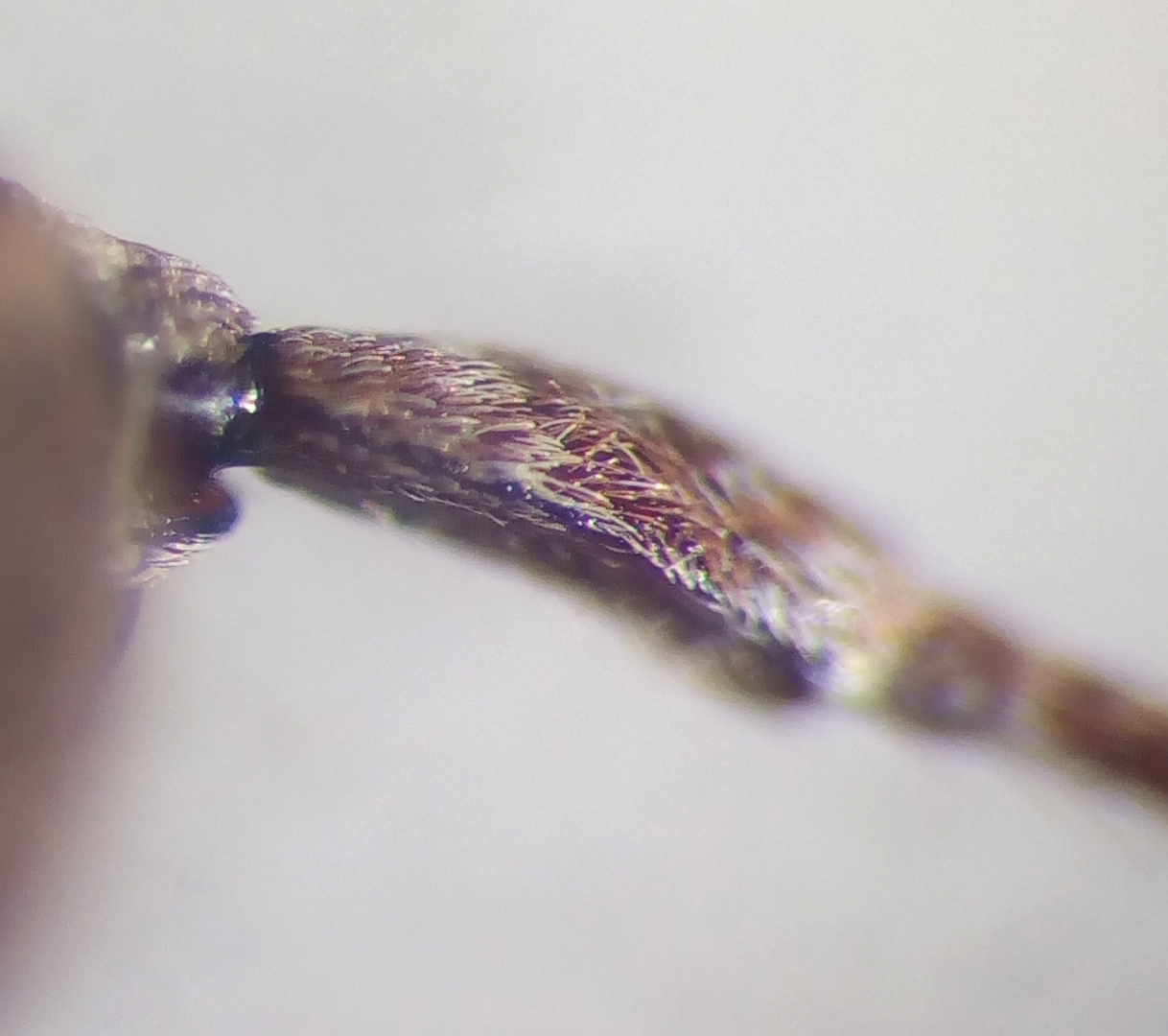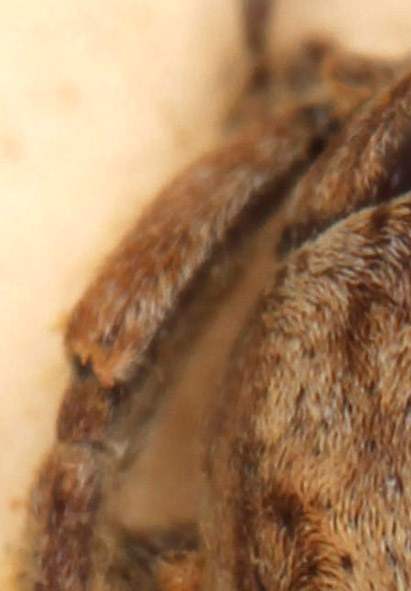| Author |
 Topic Topic  |
|
|
sangamesh
Member Purpuricenus
 
India
426 Posts |
 Posted - 06/12/2016 : 11:51:26 Posted - 06/12/2016 : 11:51:26



|

 
Loc: Kerala; The first antennomere of the specimen has lateral carina, the third antennomere is shorter than the fourth antennomere; with this combination I reached Pterolophia Sg. Trichomimoron using Breuning's Key...
the only species known in this subgenus comes from Laos which is obviously not this specimen...can anyone suggest, does this specimen rightly go to the aforesaid subgenus or does it go to something else? |
Edited by - Xavier on 06/12/2016 12:15:20 |
|
|
Xavier
Scientific Collaborator
    
France
12205 Posts |
 Posted - 06/12/2016 : 12:13:00 Posted - 06/12/2016 : 12:13:00



|

65.45 KB
Scapus with carena of Pterolophia (Trichomimoron) trichotibialis Breuning, 1963 Holotype (full picture available here)
It seems ok for Pterolophia (Trichomimoron), which has 3rd antennomera shorter than 4th.
Pterolophia (Trichomimoron) trichotibialis Breuning, 1963 is the only species, but there are hundreds Pterolophia species, may be not all described in the right subgenus... |
Edited by - Xavier on 06/12/2016 12:18:17 |
 |
|
|
sangamesh
Member Purpuricenus
 
India
426 Posts |
 Posted - 17/12/2016 : 06:26:35 Posted - 17/12/2016 : 06:26:35



|
| Thank you for ascertaining...can you please share your opinion on my naive doubt...I was wondering what should be the decision in such situations, where a specimen of interest definitely agrees with a particular taxa but the taxa itself is represented by a single species in the literature...should it be considered new on the grounds of its affinity or should it be kept unassigned as there remains an uncertainty of dubious identity existing in the literature...since the character defining the subgenus in this case seems to be very affirmative I'm eager to know how such situations can be dealt... |
Edited by - sangamesh on 17/12/2016 06:30:51 |
 |
|
|
Xaurus
Member Rosenbergia
   
Germany
1923 Posts |
 Posted - 18/12/2016 : 01:56:54 Posted - 18/12/2016 : 01:56:54



|
Unfortunately we have this situation in many tribes or genera esp in Lamiinae, Breuning's revision generally are completely useless for determinations, nevertheless these are used  . For example he described 4 Exocentrus species, all of them belongs to the same species after study, in different subgenera, and so on, examples could be continued as desired, altogether a really unsatisfied introduction . For example he described 4 Exocentrus species, all of them belongs to the same species after study, in different subgenera, and so on, examples could be continued as desired, altogether a really unsatisfied introduction |
 |
|
| |
 Topic Topic  |
|


